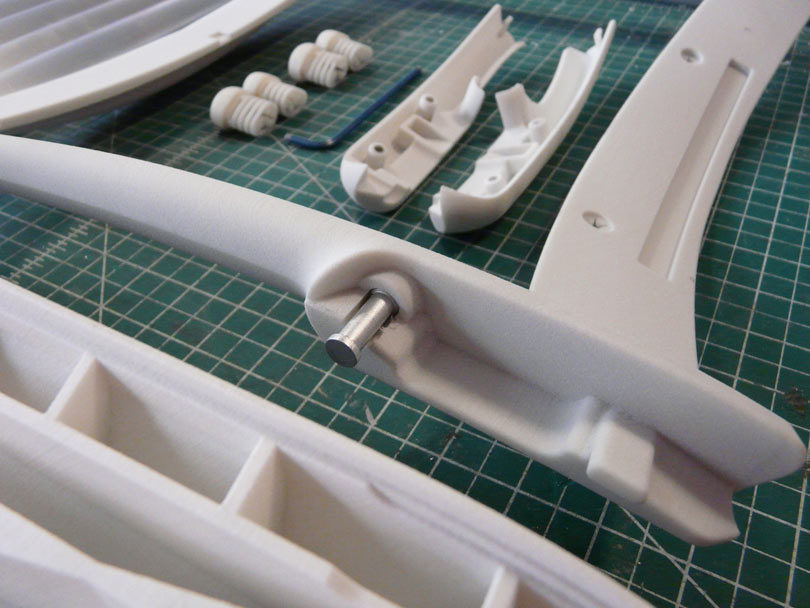Long known as the go-to choice for ergonomic workplace design, Humanscale is rapidly growing much-deserved recognition for their commitment to preserving the environment. At the head of this movement is Jane Abernethy, Humanscale’s Sustainability Officer who brings her expertise as an industrial designer and her passion for sustainable practices and transparent manufacturing. As a designer and in her current role, Abernethy has been able to make changes in how things are made by implementing ideas that lead to producing the most sustainable designs possible. Just this year, she was appointed as Vice Chair to the BIFMA (Business + Institutional Furniture Manufacturers Association) Sustainability Committee, where she’ll guide their efforts of raising environmental standards within the commercial furniture industry. In fact, Abernethy was the one who led Humanscale’s design team through the process of its first BIFMA Certification in 2012. With Earth Day coming up this Sunday, April 22nd, we invited the sustainability advocate to share her eco-conscious picks in this Friday Five.
1. Living Product Challenge
Working as a product designer, I knew that my everyday design decisions could have huge environmental impacts. Decisions like what kind and how much material to use would be repeated hundreds of thousands of times per year in mass production. I was always looking for the best way to judge if a product was “sustainable,” but mostly I found the expectations weren’t that high. People celebrated when products were a little less bad than usual, maybe using less energy or creating less pollution. It’s still going the wrong way, just less quickly. The Living Product Challenge is the first time I’ve seen the requirements be to make the world better off. Creating more renewable energy than is used in production, publicly disclosing all the material ingredients to show there are no hazards, using only captured rainwater, ‘zero waste’ factories and having a positive social impact. This is how everyone should manufacture to create a world where we all thrive.
2. NextWave
NextWave is “Keeping plastics in our economy and out of the oceans”. This cross-industry coalition, originally convened by Dell, and led by Lonely Whale includes a core group of companies committed to addressing the source of ocean plastic pollution. For example, the Smart Ocean chair uses almost 2 pounds of recycled fishing nets in each one. Fishing nets make their way into the ocean every year, and then spend years “ghost fishing” – killing marine life needlessly. Nets make up about 10% of ocean plastic, and are some of the most harmful plastics there. It’s amazing when manufacturing can help solve this issue. The more chairs are made, the more the ocean gets clean up. People who buy the chair because it’s comfortable and well designed become accidental environmentalists.
3. Healthy Materials
Most of us spend a lot of time indoors, surrounded by products. People are starting to think about what those products are made of and how this can affect our health – and it’s shocking. So many carcinogens, mutagens, and other chemicals of concern aren’t well regulated and are still commonly used. Some of them are still the industry standard, like formaldehyde, Chrome 6, PVC, PFC stain resistant coatings and halogenated flame retardants. Responsible companies have started to research the ingredients of the materials they use, remove chemicals of concern, and be honest about what’s in their products. Like the nutritional label on food, there are now ingredient labels for products: HPDs and Declare labels. These let us understand what the product is made of, and make smart choices.
4. Handprinting and the Net Positive Project
Handprints measure our positive impact. Over the years, people can conceptualize our negative impact by calculating our footprints. Handprints use the same Life Cycle Assessment (LCA) methods, but they calculate the positive impacts, using the same measurements like gallons of water, or kWh of energy. It’s more robust than “feel good” initiatives, and is a critical step on the path to becoming net positive. This is the ideal. We know that we can’t get rid of our negative footprints completely, but if we create larger positive handprints then we’re having a Net Positive impact, and the world is better off because of us. This is exciting because it changes the view we take about ourselves.
5. Northern Canada
For as long as I can remember I’ve loved exploring. I was lucky enough to spend summers in the far north of Canada; canoeing with my family when I was young and later as a tree planter, living in tents in the woods for up to a month straight before going back to a town. After being there a little while, it would start to shift my way of thinking. Subtle noises. The underside of the leaves. The smell of the dirt. I’d start to notice details that are easy to overlook, and see again how amazing the world can be.
from Design MilkDesign Milk https://design-milk.com/friday-five-with-jane-abernethy/
from Home Improvment http://notelocreesnitu.tumblr.com/post/173126293744






No comments:
Post a Comment